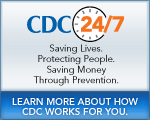Vaccine Supply Considerations
Influenza Prevention and Control Recommendations
Published for the 2010-11 Influenza Season; Adapted for the 2011-12 Influenza Season
The annual supply of influenza vaccine and the timing of its distribution cannot be guaranteed in any year. During the 2009--10 influenza season, 114 million doses of seasonal influenza vaccine were distributed in the United States. However, influenza vaccine distribution delays or vaccine shortages remain possible. One factor that affects production is the inherent critical time constraints in manufacturing the vaccine given the annual updating of the influenza vaccine strains. Multiple manufacturing and regulatory issues also might affect the production schedule.
If supplies of seasonal influenza vaccine are not adequate, vaccination should be carried out in accordance with local circumstances of supply and demand based on the judgment of state and local health officials and health-care providers. National guidance for tiered use of influenza vaccine during prolonged distribution delays or supply shortfalls will be based primarily on epidemiologic studies indicating that certain persons are at higher risk for influenza infection or influenza-related complications, as well as which vaccine formulations have limited supplies. When epidemiologic studies or other data that would guide tiered use are unavailable, persons previously demonstrated to be at higher risk for influenza or influenza-related complications should be among those targeted by immunization programs for receipt of limited supplies. Even if vaccine use is not restricted to certain persons known to be at higher risk for influenza complications, strategies employed by immunization programs and providers during periods of limited vaccine availability should emphasize outreach to persons at higher risk for influenza or influenza-related complications (Box), or who are part of populations that have limited access to medical care. During shortages of TIV, LAIV should be used preferentially when feasible for all healthy nonpregnant persons aged 2--49 years (including HCP) who desire or are recommended for vaccination to increase the availability of inactivated vaccine for persons at high risk.
Information about the vaccine supply for the 2011-12 season is available at Seasonal Influenza Vaccine – Total Doses Distributed.
NOTE: For 2012-13 Influenza Prevention and Control Recommendations see “Prevention and Control of Influenza with Vaccines: Recommendations of the Advisory Committee on Immunization Practices (ACIP) – United States, 2012-13 Season,” MMWR 2012 Aug 17; 61(32):613-618.
For 2011-12 Influenza Prevention and Control Recommendations see “Prevention and Control of Influenza with Vaccines: Recommendations of the Advisory Committee on Immunization Practices (ACIP), 2011,” MMWR 2011 Aug 26; 60(33):1128-1132.
For 2010-11 Influenza Prevention and Control Recommendations see “Prevention and Control of Influenza with Vaccines: Recommendations of the Advisory Committee on Immunization Practices (ACIP), 2010,” MMWR 2010 Aug 6; 59(RR08):1-62.
Contact Us:
- Centers for Disease Control and Prevention
1600 Clifton Rd
Atlanta, GA 30333 - 800-CDC-INFO
(800-232-4636)
TTY: (888) 232-6348 - cdcinfo@cdc.gov



